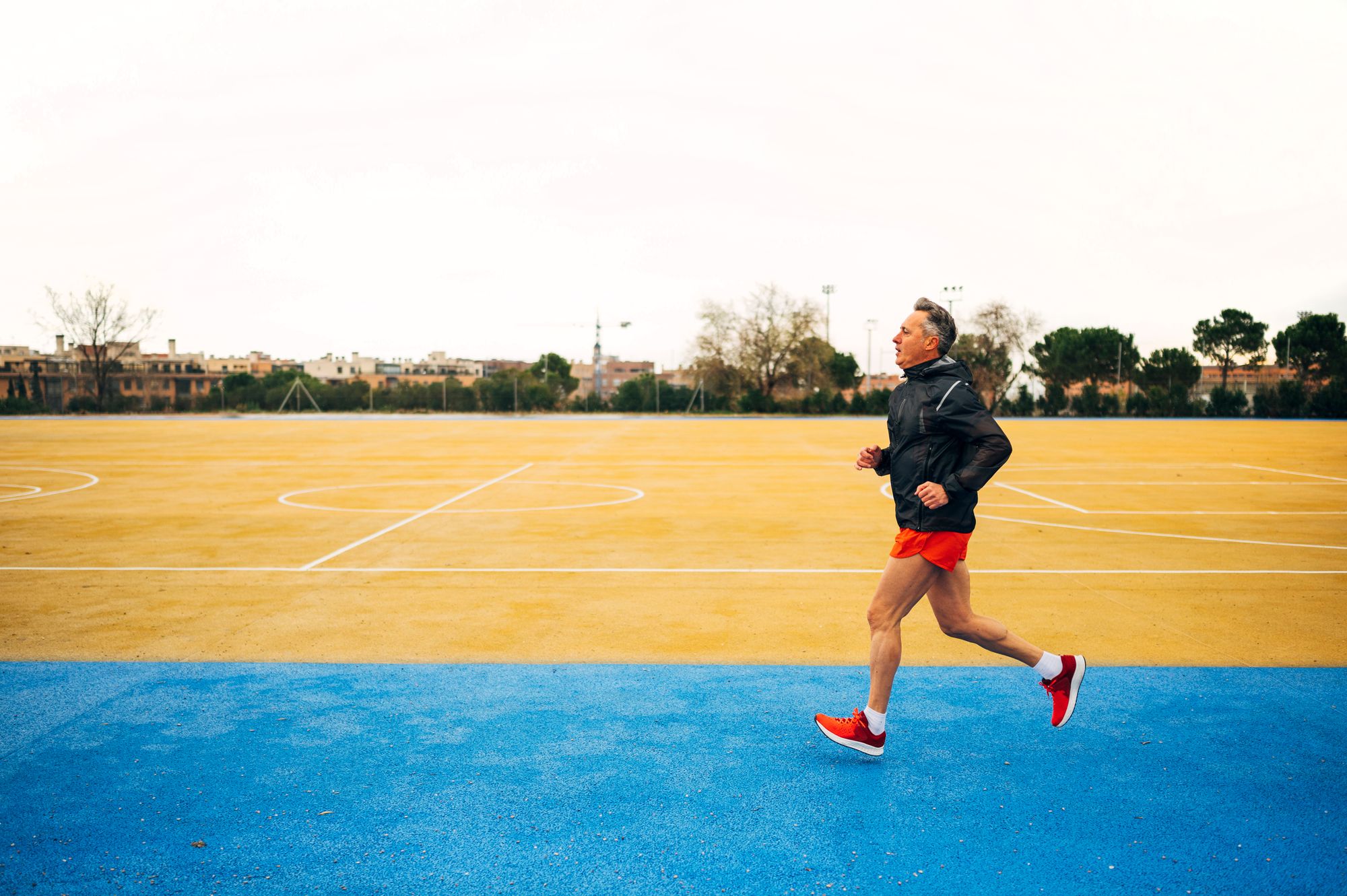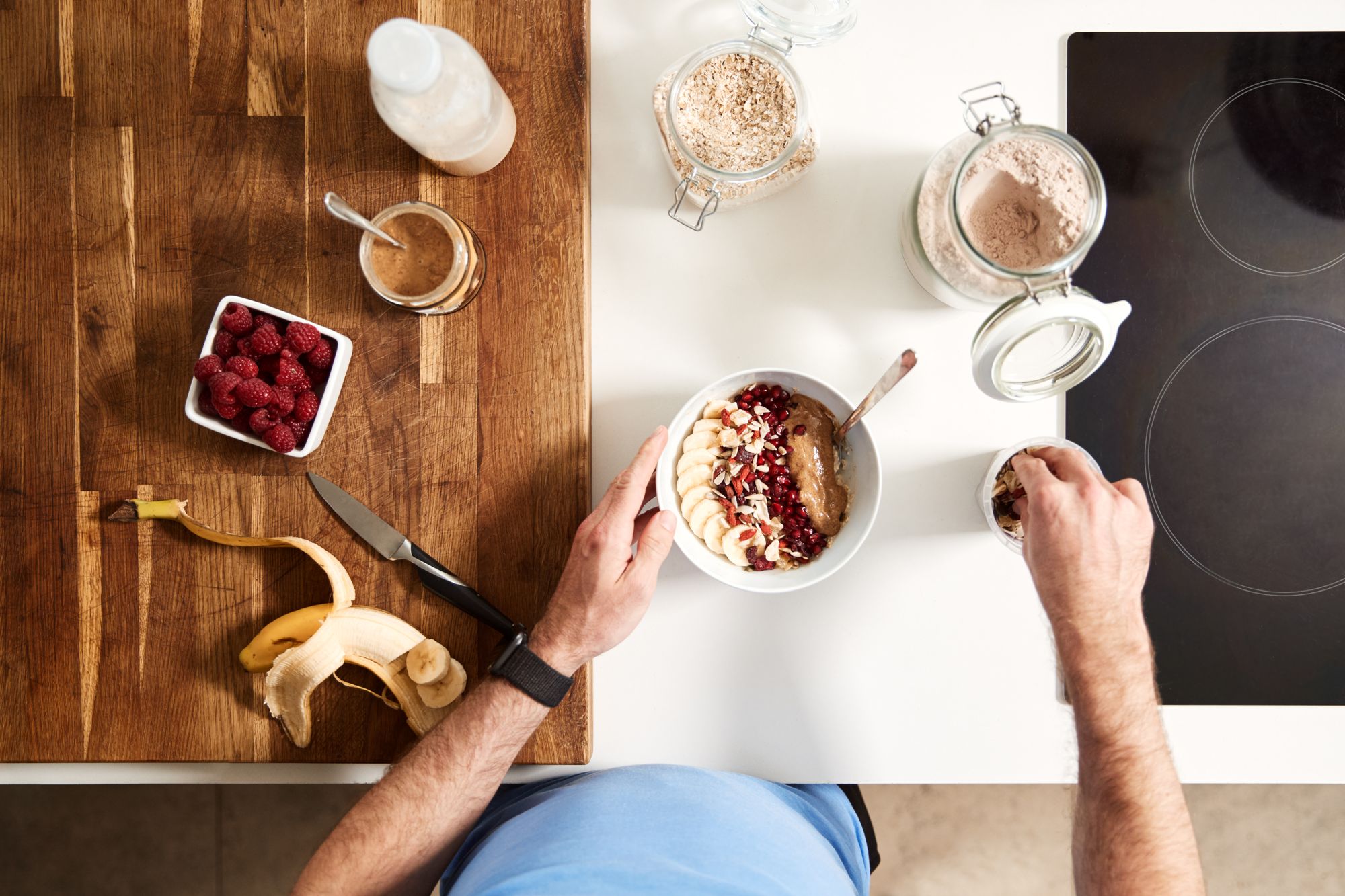How To Go from the Couch to 5k
If you haven't been running much (or at all), 5K seems like a reasonable target to hit. But how can you get from the couch to 5K? Find out here.

As much as you love strength training, you know you can’t afford to neglect cardio exercise—it keeps your heart healthy and cardiovascular disease far, far away.
But while walking is a good-enough cardio activity … I think we can all agree it isn't necessarily the most well, exciting.
Plus, there's also no denying its time-consuming nature.
So, is there anything that’s more stimulating and less time-consuming? There is. And you don’t even need complicated equipment, friends for accompaniment, or to learn new skills.
All you have to do is pick up the pace and get running.
Haven't run in a while, and you're afraid that you'll get overwhelmingly breathless within the first minute? Don't worry; here's how to go from the couch to 5k.
Our meaning of “the couch to 5k”
First, though, here’s a disclaimer.
There is a 9-week “Couch to 5K” program invented by Josh Clark of CoolRunning back in 1996 (!) which is entirely free to access. It involves 3 runs weekly, with a day of rest in between—and a different schedule for each of the 9 weeks.
But here’s the thing: this article isn’t about that specific Couch to 5k program, but instead, more generalized advice that’ll get you from the couch to 5k.
#1: Getting started
Now that we’ve got that out of the way, here’s what you need to get started:
Surprise, surprise. When shoe-shopping, you don't need to care about terms like "pronation" or "high arches". In a sweeping review—published in the British Journal of Sports Medicine—of the science of running shoes and injuries, researchers concluded that the most critical feature of a running shoe is comfort. Seriously. That's it.
? Socks
Anyone who's walked for extended periods with ill-fitting socks will know the agony of taking a shower with raw blisters (oh, the misery). So, imagine how torturous the blisters from running will be. Prevent unnecessary suffering by choosing a breathable, snug sock that’s not suffocating. Make sure it’s made of sweat-wicking material, too, so you don’t end up with smelly feet.
A pair of running shoes and socks—is that all you need to go from the couch to 5k? Yes, it is. On the equipment front, that is. Don't be mistaken; there's still work to be done.
#2: Nutrition and hydration
Just like how eating well will help you perform at your best in the gym, paying attention to your dietary choices (i.e., what and when you eat) can make all the difference to how you feel when you’re running:
- When to eat: Not eating before your run because you're afraid you'll chuck everything out during your workout? Big mistake. Doing so starves your body of fuel, and you'll run into a brick wall prematurely on your run. So, eat an hour before you run to boost energy (yet without upsetting your stomach).
- What to eat: Make a fist. That's about how much food you should eat (think appetizer, not a full-blown meal). As to what it should contain, it should ideally be a mixture of carbohydrates and protein. E.g., the traditional peanut butter sandwich, for example. Psst: find out how to get your protein on the cheap here.
- Don’t overdo hydration: Don’t get obsessed with having to drink X liters of fluids for every X km clocked. Instead, only drink when you’re thirsty; it's as simple as that. Also, electrolyte-containing sports drinks are unnecessary if you keep your runs to under an hour. In other words: plain old water will work just fine.
Here's a little warning: while you'd think that weight loss would necessarily result from running (you're burning more calories, after all!), that couldn’t be further from the truth.
Many people end up gaining weight instead.
Why? Well, it’s something called adaptive thermogenesis. How do you typically feel after running? Ravenous, right? That means you’re likely to unknowingly overeat—negating your calorie burn during the run, possibly more. Ouch.
So, how can you prevent this from happening? One strategy you could use to track your calories.
That said, this strategy isn’t suitable for everybody; determine if it’s right for you by checking out the article below:

#3: Training
Right. Now here comes the most important bit of all … running.
Okay, I'm going to be honest here: there is plenty of "couch to 5k" or "0 to 5k" programs out there—and it's up to you to pick one that suits your schedule, ideal training frequency, and timeline.
Depending on which you go with, you may reach your goal of 5k in 6 weeks, 9 weeks, or 12 weeks (maybe even beyond).
But whatever, because the most crucial thing is that it must be a plan you can be consistent with. With all that out of the way, here are a few great beginner-friendly programs that’ll take you from the couch to 5k:
- The original “Couch to 5K” program by Josh Clark (9 weeks)
- Beginner’s Schedule to 5K by Runner’s World (6 weeks)
- 5K Training Plan by OxygenMag (12 weeks)
Go ahead, check them out. See which you like best—and start implementing. But wait … before that, have you ever thought about what happens next? Or, more specifically, what you’re going to do once you successfully run 5K?
#4: Becoming faster
Well, why not consider becoming faster?
Here are a few techniques you could use to gain speed in those legs:
During a fartlek (I know, it’s a funny word—I’m giggling too!), you speed up and slow down at varying, non-uniform intervals. I.e., at random. That means you could run hard for 2 minutes, then run easy for 3 minutes.
⌚ Intervals
Intervals are basically fartleks but at uniform intervals. Treat it like a HIIT workout; run hard for 2 minutes, then rest 1 minute, and repeat until you're done.
⛰️ Hills
Oh, hills. This may be the most painful workout you'll ever do (arguably even more so than burpees)—but the results are worth the torture. What you want to do is to pick a hill, then run up and down it repeatedly. Doing your couch to 5k program on a treadmill? Set the treadmill on an incline, then!
?️ Strength training
This shouldn’t be surprising, but strength training can help you run faster. Why? Think about it: what do stronger quads and hamstrings translate into? That's right. More powerful legs that'll go the distance and fast.
There are a few things to note when doing strength training and cardio simultaneously (for optimal performance at both). Check out this article to find out what those are:

Need more structure in your training?
Still need more help on the strength training front? Not sure which exercises will help you get faster on the track/treadmill/pavement?
GymStreak—a smart, AI-powered personal trainer app—could help with that. Simply input your fitness goals, and it'll come up with a tailored resistance training program that'll get you blazing fast in record-breaking time.
Do What It Takes To Become Blazing Fast.
Download GymStreak, and let us take care of workout programming—so you can concentrate on training. To the best of your abilities.
References
Couch to 5k—C25K Running Program. (n.d.). Retrieved May 23, 2022, from http://www.c25k.com/
Nigg, B. M., Baltich, J., Hoerzer, S., & Enders, H. (2015). Running shoes and running injuries: Mythbusting and a proposal for two new paradigms: ‘preferred movement path’ and ‘comfort filter.’ British Journal of Sports Medicine, 49(20), 1290–1294. https://doi.org/10.1136/bjsports-2015-095054
Ramakrishnan, R., Doherty, A., Smith-Byrne, K., Rahimi, K., Bennett, D., Woodward, M., Walmsley, R., & Dwyer, T. (2021). Accelerometer measured physical activity and the incidence of cardiovascular disease: Evidence from the UK Biobank cohort study. PLOS Medicine, 18(1), e1003487. https://doi.org/10.1371/journal.pmed.1003487
The 12-Week 5K Training Plan. (2021, May 29). Oxygen Mag. https://www.oxygenmag.com/training-tips-for-women/the-12-week-5k-training-plan/
World, R. (2021, December 9). This plan will take you from beginner to 5K in just six weeks. Runner’s World. http://www.runnersworld.co.uk/training/a760067/six-week-beginner-5k-schedule/


